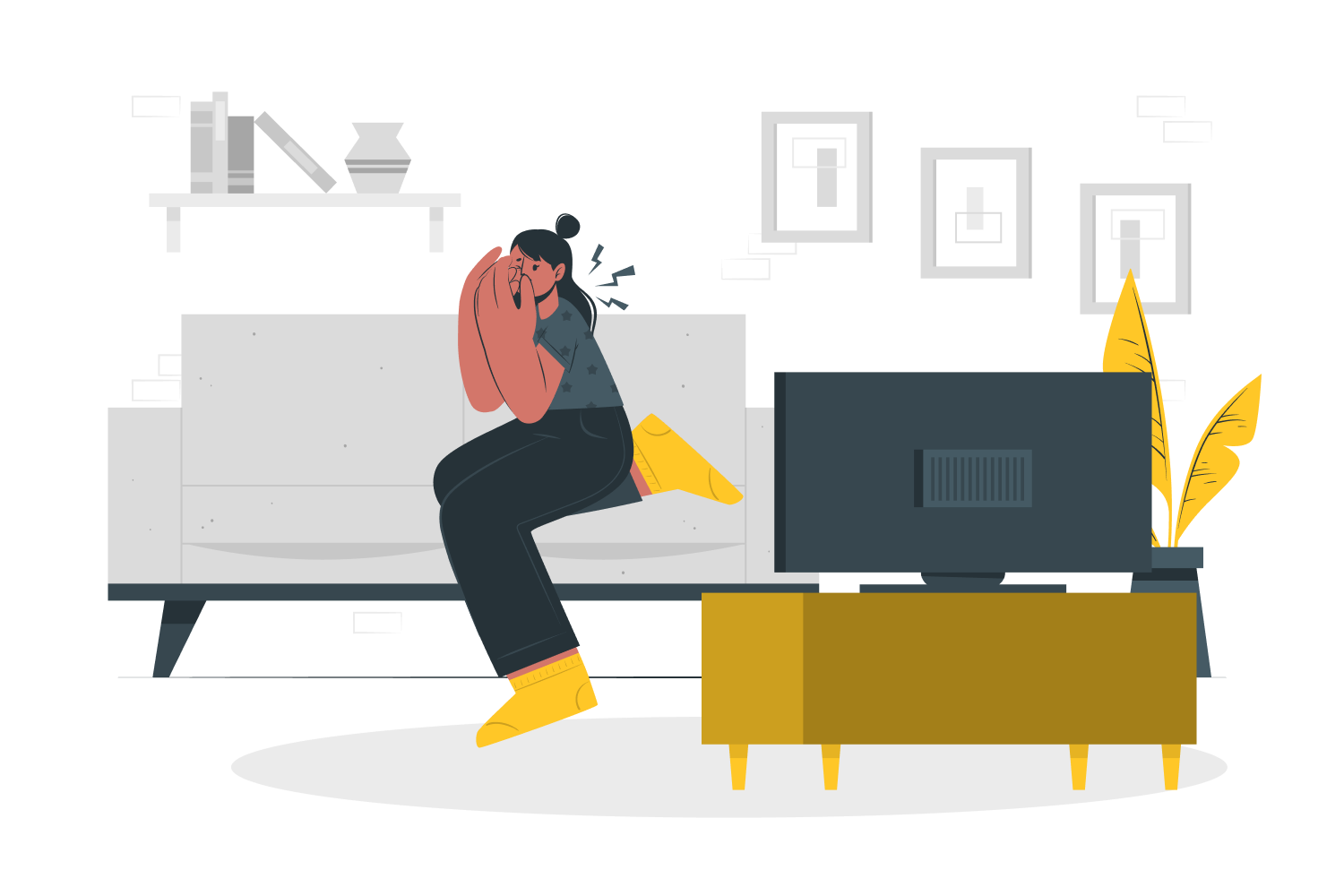Condition · 8 min read · 19 Jul 2021
Learn about neck pain and how to manage your pain and improve your quality of life.
Use this content to learn management strategies to take control of your neck pain.

Use this content to learn management strategies to take control of your neck pain.

Neck pain is a common pain condition and in most cases settles down with simple management. Neck pain is usually referred to as ‘specific’ or ‘non-specific’.
Your health professional can screen for specific structural or spinal pathology (such as infection, or inflammation) that may be causing your neck pain. Specific causes of neck pain in young people are rare.
This means that the majority of young people with neck pain DO NOT have ‘specific’ pathology, and other known factors are contributing to your neck pain.
If your neck pain that has started for no apparent reason, if your neck pain is constant or severe, if you feel unwell or have a fever or rapid weight loss, it’s important to see your doctor.
Completing our medical self-check, helps screen for symptoms or conditions that might need a medical review. Seeking immediate medical review if needed is strongly recommended to ensure you get the right care at the right time and to ensure there is nothing seriously wrong.
While rare, the following conditions can be associated with neck pain:
With non-specific neck pain, spinal structures can become painful and sensitive without specific structural damage or pathology. There are likely other factors that are contributing to your neck pain, these include:
While neck pain is always REAL, searching for a tissue cause with this type of neck pain can be unhelpful and can leave you feeling unsure and distressed. Here, your health professional’s role is to first and foremost check that nothing serious is going on, so that you can feel confident that you are safe to move. After this has been done, we can make a plan together to get you back doing the things you really enjoy i.e. riding your bike, reading a book or going out with your friends.

There are lots of myths about neck pain that people commonly believe. Myths can be very unhelpful.
Myth: Neck pain is caused by loose joints, or the neck being ‘out’ of place
Fact: Necks are strong, mobile structures and they don’t go ‘out’ of place
Myth: Neck pain means my neck is damaged
Fact: Neck pain can occur from no specific causes and/or can be associated with no tissue damage or pathology as well as through a traumatic injury such as a sporting injury or falls. When neck pain is associated with tissue damage, healing typically occurs within 6-8 weeks.
Myth: Neck pain is just a physical, structural problem
Fact: Neck pain can be related to levels of muscle tension, not being active enough, poor sleep, activity levels, mood, stress or worry
Myth: Painful necks need to be rested and protected
Fact: Good sleep, healthy diet, relaxed movement and regular activity and exercise helps neck pain
Myth: It is dangerous to exercise, move, bend or stretch with neck pain
Fact: Necks get healthier and stronger with graduated movement, activity and exercise
Myth: You need to watch your posture with neck pain
Fact: A range of postures are safe for the neck. Being too sedentary isn’t good for neck pain
Myth: Ongoing neck pain means the spine is becoming more damaged
Fact: Ongoing neck pain is related to the sensitivity of the neck tissues to load and movement. This is related to many factors but is rarely linked to tissue damage.
Myth: There is nothing you can do for neck pain
Fact: Neck pain can be effectively managed with the right care
Myth: Neck pain will get worse with time
Fact: With the right care, neck pain can get better with time
Myth: A neck pain flare-up means I have injured my neck
Fact: Pain flare-ups are common and are usually caused by factors such as inactivity, fatigue, stress and low mood. With the right care, you can develop a set of tools/strategies to recover well from a flare-up
Neck pain that has a non-specific cause generally ‘comes’ and ‘goes’. The trick is to try and work out what is/are the main trigger(s) for your neck pain.
These questions can help to identify your pain triggers:
The best care for most neck pain is having a good understanding of neck pain. Credible education about pain is really helpful. Knowledge helps put you in the driver’s seat and better supports you in knowing that it’s safe to move, it’s good to change positions and postures throughout the day, and that general movement, exercising and strengthening your neck are helpful approaches to support your recovery.
Having knowledge also means you can reflect on the triggers for your neck pain and learn different habits that help you recover or better manage your neck pain.
“When bending over to pick up a tissue, I notice that I guard and protect my neck”. I can reflect: was it necessary for me to guard my neck– a tissue is so light – why should that hurt? What damage could that do?
Insights and learning: When neck pain persists, much of what we do day to day, including how we move, becomes a habit – some habits are helpful and others are not.
Let’s repeat the experiment: Try bending over to pick the tissue up, and this time, take a slow deep breath, soften your neck and shoulder muscles…sink into the movement…this should be more comfortable. Here, small gains build towards bigger gains over time. Your mind and body take time to learn that it’s safe to move and movement can ease pain.
Things you can do that usually help neck pain include:
Rather than using a single approach (like medications), a few combined simple strategies (exercise, sleep, medications and stretches/relaxation and paced activity) may be more helpful for you.
Treatments such as massage and ‘joint mobilisation’ may provide short-term benefits but this alone is not helpful and does not provide lasting relief.2.
Check out our recommended care fact sheet.

Medications can play a role in the management of neck pain (without nerve pain), but are not recommended as a standalone treatment. Simple pain medications (paracetamol e.g. Panadol), and anti-inflammatories (e.g. Celebrex) may be recommended for short-term use.
The use of medications is designed for short-term use to help keep you moving and stay engaged in the things you love to do. Side effects from medications can vary and you should ask your doctor about the risks and benefits of using medicines.
Check out the medicines and pain management module, for the pros and cons of medicines and how they fit into your overall pain management plan.
Most acute non-specific neck pain is short-lived and resolves. For some young people, however, neck pain can persist, or they experience repeat episodes. We are starting to better understand why this may occur.
The various factors that can contribute to ongoing or recurrent neck pain that was outlined above are relevant here. Other factors include:
Factors that help protect against ongoing neck pain include moving, keeping active and engaged in things you enjoy as much as possible, avoiding sitting for long periods of time, and hanging out with friends or family.
Check out the approaching pain management module to learn more about these factors.
Whiplash-associated disorders can occur in some people following a sudden impact injury, such as a motor vehicle crash or a sporting injury5.
For more information about whiplash and whiplash management exercises, see the Whiplash Injury Recovery: a self-help guide or the My Whiplash website.
Motor Accidents Authority Guidelines for the management of acute whiplash-associated disorders – for health professionals. Sydney: 20145 and the Motor Accidents Authority NSW Youtube channel. This self-help guide has videos about moving and exercising accessible by QR codes.
In rare cases, it is possible to get a fracture or broken bone in your neck after a car accident or sporting impact injury. Consult your health professional as soon as possible after a motor vehicle crash, so they can examine you and provide the best advice about what care you need. Getting the right approach, at the right time, means that you can recover more quickly and any serious conditions are identified.
Factors that may suggest a slower recovery after whiplash include:
If any of these apply to you, ask your health professional as early as possible how they can help you get the best care at the right time.
A combined approach is recommended6 – one that is tailored to your needs and goals. For whiplash, reducing stress, worries and concerns, along with an exercise program to help you keep moving, supports recovery8.
Treatments currently recommended for whiplash-associated disorders, where there is NO serious pathology (e.g. fracture), include5:
Tension headaches and migraines are common in young people. It is important to discuss your headaches with your health professional to ensure you receive the right care. Trying to establish the cause of your headaches is a good starting point to finding out which treatments are right for you.
Consider:
Sometimes, headaches can be coming from sensitive joints in the neck (cervicogenic headache) and your physiotherapist can assess this and advise you about the right treatments for your problem7.
If you’re experiencing neck pain or are concerned about your neck pain use our medical self-check to help you screen for conditions that may suggest you should consult a Health Professional.
If you’re experiencing whiplash or would like further information about whiplash go to the State Insurance Regulatory Authority NSW or Recover Centre Whiplash Consumer Resources or mywhiplash
For specific treatment evidence for neck pain go to Cochrane Summaries.
Alternatively, if you want to talk to someone about Neck Pain, please seek further assistance.